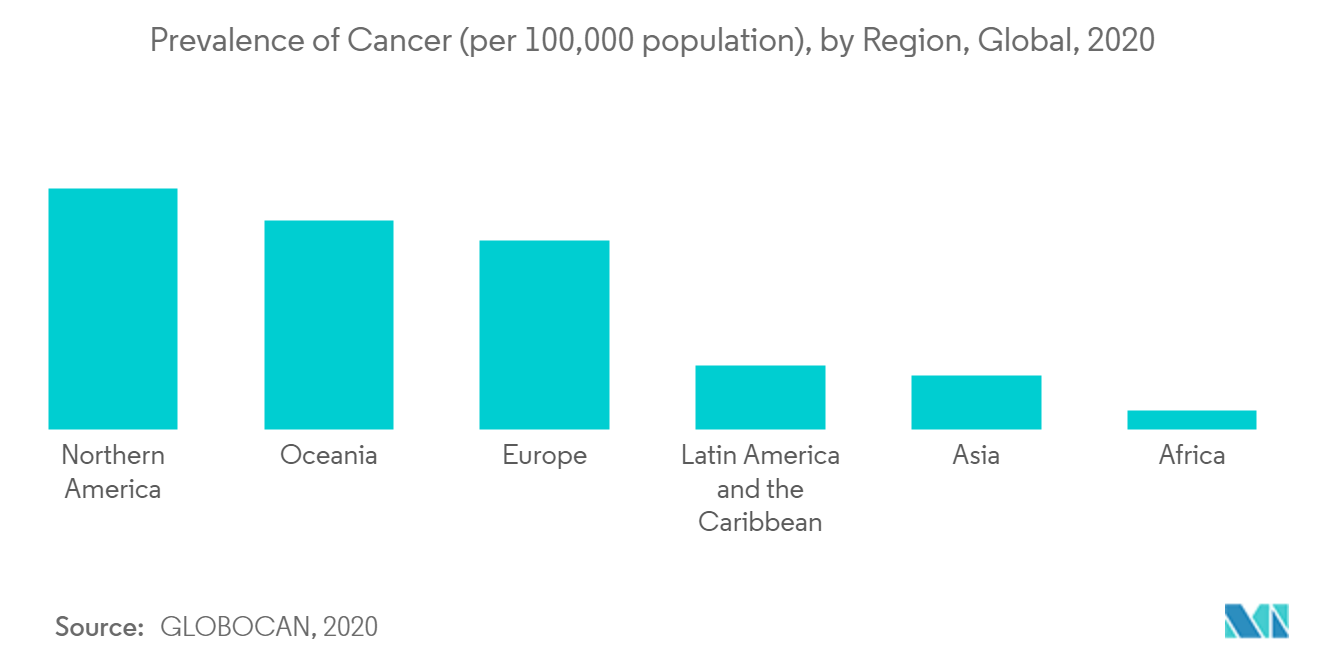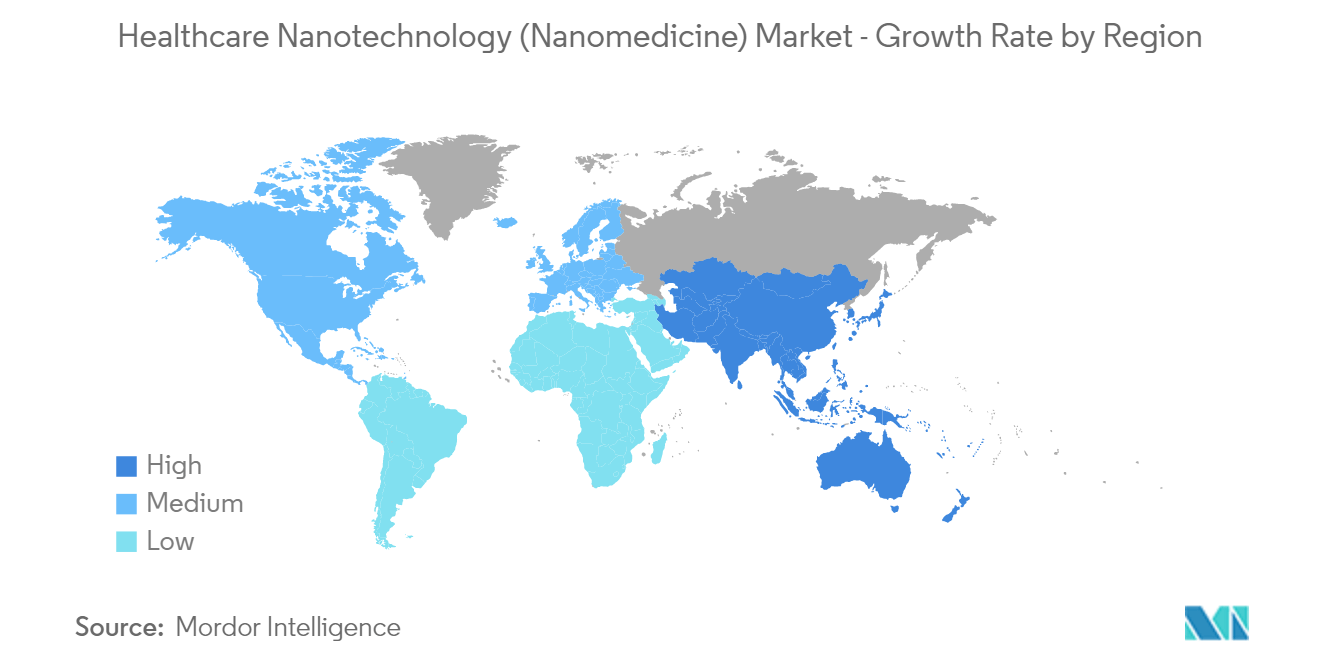Market Trends of Healthcare Nanotechnology (Nanomedicine) Industry
This section covers the major market trends shaping the Healthcare Nanotechnology Market according to our research experts:
The Oncological Diseases Segment is Expected to Show Better Growth During the Forecast Period
Nanomedicine is a promising mode of cancer treatment. This growing field of medical research can be used to discover better-personalized treatments for a wide range of diseases, including cancer. Globally, the prevalence of cancer is increasing. For instance, according to GLOBOCAN, 2020, the global cancer burden increased to 19.3 million cases and 10 million cancer deaths in 2020.
In the field of oncology, nanomedicine offers promising transformations from the existing methods of treatments and diagnosis of cancer. The adoption of nano-based cancer therapies and diagnostics witnessed noteworthy progress, and numerous new developments are currently in the pipeline.
According to a research article titled 'Recent Advances in Nanomaterials Development for Nanomedicine and Cancer', published in July 2021, a wide range of engineered nanomaterials and nanoplatforms with different shapes, sizes, and compositions has been developed for various biomedical applications. The nano-based materials and devices have also been used extensively to develop point-of-care and highly sensitive methods of cancer detection. Thus, advances in nanomedicine for the detection of cancer are driving the market's growth.
Moreover, the frequent launches of cancer medicines with nanomedicine technology are driving the market significantly. In April 2019, Nanobiotix, a clinical-stage nanomedicine company, obtained the CE approval for its Hensify (NBTXR3), an aqueous suspension of crystalline hafnium oxide (HfO2) nanoparticles designed for injection directly into the tumor before a patient's first standard radiotherapy treatment of advanced soft tissue sarcoma.
According to a research article by Ye Zhang et al., published in the Journal of Hematology & Oncology Journal 2019, researchers at the Memorial Sloan Kettering Cancer Center and Cornell University developed silica-hybrid nanoparticles (C-dots) for PET imaging of patients with metastatic melanoma or malignant brain tumors. These nanoparticles, coupled with 124I-labeled cyclo-[Arg-Gly-Asp-Tyr] (cRGDY) peptides, can selectively bind to integrins and can be used to probe tumor cells.

North America is Expected to Hold the Largest Share of the Market
The major factors attributing to the market's growth are technological advancements, coupled with relevant applications in early disease diagnosis, preventive intervention, and prophylaxis of chronic and acute disorders, which are expected to bolster the market's growth in the United States.
For instance, according to the Centers for Disease Control and Prevention, 2021, heart disease accounted for one in four deaths in the United States. Coronary heart disease is the leading cause of deaths attributable to cardiovascular disease in the United States, causing 360,900 deaths, followed by stroke (805,000). This high burden may lead to the high demand for specific therapeutic nanovectors, nanostructured stents, and implants for tissue regeneration.
Moreover, several R&D activities are ongoing in the country on drugs and diagnostics based on nanotechnology, which may drive market growth. For instance, in January 2020, researchers from Stanford University developed a drug coated with nanoparticles that limits the development of atherosclerosis in mice by reducing plaque buildup in their arteries without causing harmful side effects.
Additionally, a few of the key market players in the country are developing novel products and technologies to compete with the existing products, while others are acquiring and partnering with other companies trending in the market. In 2020, Nano-X Imaging and SPI Medical entered an agreement to distribute and introduce Nanox's novel X-ray systems in Mexico. Nanox ARC uses nanotechnology and semiconductors to replace the cathode ray tubes in traditional machines.
Additionally, during the COVID-19 pandemic, nanomedicine has been found to play a key role in the development of vaccines. Scientists and market players in the region are increasing experimental studies to find suitable and promising therapeutics that may effectively tackle the highly contagious COVID-19 virus. In October 2020, the Canadian government announced the funding of USD 18.2 million to Precision NanoSystems to develop an RNA vaccine for COVID-19. This investment will support the development of a cost-effective COVID-19 vaccine by using lipid-based drug delivery systems and nanomedicine.


